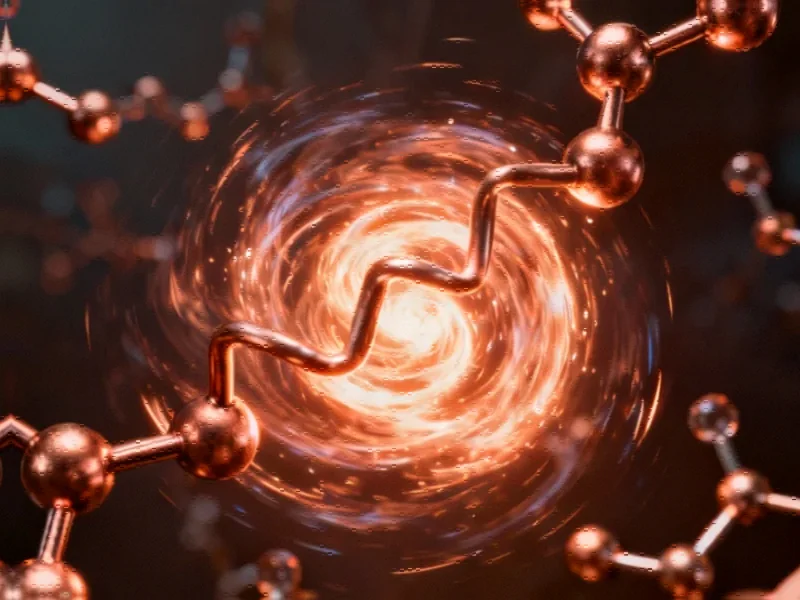Revolutionary Approach to Chiral Molecule Construction
In a groundbreaking development published in Nature Chemistry, researchers have unveiled a copper-catalyzed asymmetric cross-coupling methodology that demonstrates remarkable tolerance toward highly reactive radical species. This innovative approach enables the synthesis of diverse enantioenriched compounds containing carbon, phosphorus, and sulfur stereocenters through a sophisticated mechanism combining enantioselective stereocenter formation with chirality-transferring radical substitution.
The methodology represents a significant departure from conventional asymmetric radical cross-coupling reactions, which predominantly rely on enantioselective reductive elimination to establish stereocenters. By implementing a sequential stereodiscrimination and chirality transfer strategy, the research team has overcome longstanding challenges associated with controlling enantioselectivity when dealing with highly reactive radical intermediates.
Mechanistic Insights and Strategic Design
At the core of this breakthrough lies the formation of a chiral copper-nucleophile complex that serves as the enantiodetermining species. The researchers identified sulfur nucleophiles as particularly promising candidates due to the robust nature of metal-sulfur bonds and the propensity of S(II) and S(IV) compounds to participate in intramolecular homolytic substitution reactions with high stereochemical fidelity.
Through meticulous stoichiometric control experiments, the team demonstrated that N-acylsulfenamides undergo tautomerization upon deprotonation to form S(IV)-metal complexes with S-stereogenic centers. Copper emerged as the ideal transition metal catalyst due to its exceptional resistance to sulfur poisoning—a critical consideration in developing practical catalytic systems. This discovery aligns with other recent copper catalysis breakthroughs that are transforming synthetic methodology.
Experimental Validation and Catalytic Development
The research team conducted extensive experimental validation, including the isolation and characterization of key intermediates through X-ray diffraction analysis. These studies confirmed that copper(I) species can function as effective “radical leaving groups” in substitution-based asymmetric catalysis. Perhaps most impressively, the chiral S(IV) centers underwent radical substitution with 100% inversion of configuration, demonstrating exceptional chirality-transferring fidelity.
Building on these stoichiometric findings, the researchers developed catalytic conditions using three distinct substrate classes: γ-aminocarbonyl alcohols, β-aminocarbonyl H-phosphinates, and N-acylsulfenamides. The incorporation of tethered carbonyl groups proved crucial for enhancing stereodiscrimination during the formation of the chiral copper-nucleophile complex. This sophisticated approach to catalyst design represents significant progress in contemporary chemical research methodologies.
Unprecedented Radical Scope and Functional Group Tolerance
The catalytic system demonstrates extraordinary versatility, accommodating over 50 different radical species centered on carbon, nitrogen, oxygen, sulfur, and phosphorus. Particularly noteworthy is the successful incorporation of notoriously reactive radicals including methyl, tert-butoxyl, and phenyl radicals—species that have previously posed significant challenges for enantioselective functionalization.
The methodology exhibits remarkable insensitivity to radical stability, steric properties, and polarity. The research team successfully coupled radicals ranging from highly stabilized benzyl radicals (C-H BDE: 90 kcal/mol) to extremely unstable methyl radicals (C-H BDE: 105 kcal/mol), with all cases delivering excellent enantioselectivities and high isolated yields. This broad compatibility with diverse radical characteristics represents a significant advancement in the field of catalyst technology and reaction design.
Synthetic Applications and Practical Utility
The practical implications of this methodology are substantial across multiple domains of chemical synthesis:
- Pharmaceutical Applications: The direct conversion of racemic phosphinates into chiral phosphonamidates provides access to privileged structures in nucleoside drug discovery
- Diverse Chiral Centers: Successful formation of C-, P-, and S-chiral compounds with high enantiomeric excess
- Broad Substrate Scope: Compatibility with acyclic and cyclic secondary alkyl groups, primary and tertiary alkyl groups, and aromatic substituents
- Multiple Radical Types: Effective coupling with sulfonyl, benzyl, phenyl, acyl, phosphonyl, propargyl, and aminyl radicals
This methodology enables the synthesis of chiral sulfilimines, sulfinamidines, and sulfinimidate esters—valuable synthetic intermediates with applications in medicinal chemistry and materials science. The ability to construct these complex molecular architectures with high stereocontrol represents a significant step forward in scientific innovation and synthetic strategy.
Future Directions and Broader Implications
The development of this copper-catalyzed asymmetric radical cross-coupling methodology opens numerous avenues for future research and application. The unprecedented tolerance toward highly reactive radicals suggests potential for expanding the scope to include even more challenging radical species. The mechanistic insights regarding chirality transfer through radical substitution processes may inspire new strategies for asymmetric synthesis beyond the specific transformations demonstrated in this study.
As the field of radical chemistry continues to evolve, this work establishes a new benchmark for combining radical reactivity with asymmetric catalysis. The demonstrated compatibility with diverse radical characteristics—regardless of stability, sterics, or polarity—suggests that the underlying principles may find application in addressing other longstanding challenges in synthetic chemistry.
The research exemplifies how fundamental mechanistic understanding, combined with innovative catalyst design, can overcome previously insurmountable obstacles in chemical synthesis. As this methodology sees broader adoption and further development, it promises to accelerate discovery across pharmaceutical, agrochemical, and materials science domains where enantioselective synthesis plays a crucial role.
This article aggregates information from publicly available sources. All trademarks and copyrights belong to their respective owners.
Note: Featured image is for illustrative purposes only and does not represent any specific product, service, or entity mentioned in this article.
